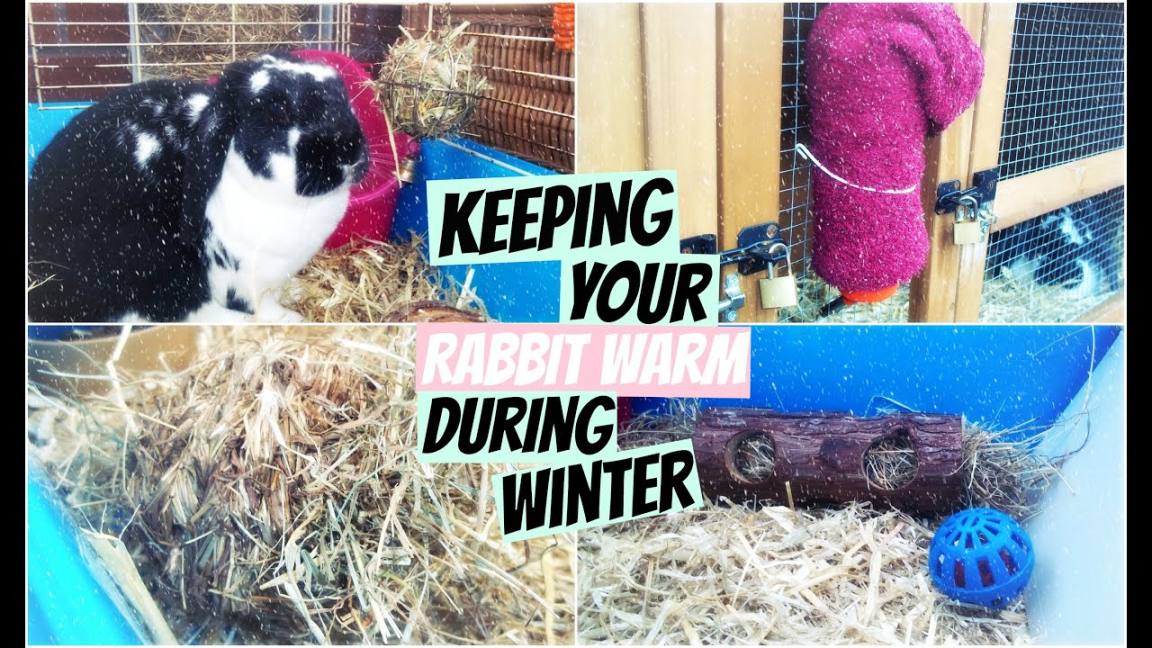How to Keep a Rabbit Warm in Winter
Winter can be a challenging season for pet rabbits, as they are highly sensitive to cold temperatures. As responsible rabbit owners, it is crucial to ensure their well-being by taking appropriate measures to keep them warm and comfortable during the chilly winter months. In this article, we will discuss effective ways to protect your furry friend from the cold.

Providing Adequate Shelter
Rabbits require a warm and cozy shelter to escape from harsh weather conditions. Here are some key considerations when it comes to their shelter:
1. Insulating the Hutch
Make sure your rabbit’s hutch is properly insulated to prevent drafts. You can achieve this by using insulation material such as polystyrene sheets or bubble wrap. Attach these materials securely to the inside walls of the hutch to create a barrier against the cold.
2. Elevating the Hutch
Raising the hutch off the ground helps to prevent moisture from seeping into the flooring, keeping your rabbit dry and warm. Use bricks or wooden pallets to elevate the hutch, ensuring stability and security.
3. Providing Bedding
Soft bedding material provides additional warmth and comfort for your rabbit. Good options include straw, hay, shredded paper, or specially designed rabbit bedding. Replace the bedding regularly to maintain cleanliness.
4. Using Hutch Covers
Hutch covers act as a shield against wind, rain, and snow. Choose covers made from waterproof and windproof materials to protect your rabbit’s hutch effectively. Ensure that the cover fits securely and does not obstruct ventilation.
Keeping the Environment Warm
In addition to providing a suitable shelter, it is important to create a warm environment for your rabbit within your home or their living space:
1. Indoors or in a Warm Room
If possible, bring your rabbit indoors during the winter months. Keeping them in a warm room, away from drafts and extreme temperature fluctuations, will ensure their comfort. Ensure the room is well-ventilated and free from hazards, such as toxic houseplants or exposed electrical wires.
2. Use Heat Pads or Bottles
Heat pads or bottles can be placed under your rabbit’s bedding to provide additional warmth. Ensure they are wrapped in a towel or covered with a heat-resistant pad to prevent direct contact with your rabbit’s skin, avoiding any burns or discomfort.
3. Provide Extra Hay
Rabbits generate heat through digestion, so it is essential to ensure they have an ample supply of hay during winter. Hay not only aids in digestion but also helps keep them warm from the inside out.
Monitoring Food and Water
Proper nutrition and hydration are crucial for your rabbit’s overall health, especially during winter:
1. Increase Food Portions
During winter, rabbits require more calories to maintain their body temperature. Increase their daily food portions, focusing on high-quality hay, fresh vegetables, and a limited amount of pellets. Consult your veterinarian for specific dietary recommendations.
2. Prevent Water Freezing
Water is essential for your rabbit’s well-being, but it can easily freeze during winter. Consider using a thermal water bottle or bowl to prevent freezing. Check water sources frequently and replace them if they become frozen.
Exercise and Interaction
Regular exercise and social interaction are vital for your rabbit’s physical and mental well-being:
1. Indoor Playtime
Dedicate a safe and rabbit-proofed area within your home where your rabbit can run and play. Keep in mind that rabbits need ample space to exercise, so allow them to explore a larger area when supervised.
2. Bonding Time
Rabbits are social animals and thrive on companionship. Spend quality time with your rabbit, providing them with attention, affection, and mental stimulation. Engage in gentle grooming sessions or interactive play to maintain a strong bond.
FAQs (Frequently Asked Questions)
1. Can I use a heat lamp to keep my rabbit warm?
It is generally not recommended to use heat lamps for rabbits. Rabbits have sensitive respiratory systems, and heat lamps can cause overheating or even start a fire if not used carefully. It is best to opt for safer alternatives such as heat pads or bottles.
2. Is it necessary to change the bedding often?
Yes, it is crucial to change the bedding regularly to maintain cleanliness and prevent the build-up of moisture or odors. Dirty bedding can lead to various health issues for your rabbit.
3. How can I tell if my rabbit is too cold?
Signs of a cold rabbit include shivering, huddling in a corner, cold ears or body, and a decrease in activity. If you notice any of these signs, take immediate steps to warm up your rabbit.
4. Can I use a space heater to warm up my rabbit’s living area?
Space heaters pose a significant fire hazard, especially in areas with bedding or dry hay. It is best to avoid using space heaters near your rabbit’s living area to prevent accidents and potential harm.
Keeping your rabbit warm during winter is essential for their well-being. By providing adequate shelter, creating a warm environment, monitoring food and water, and ensuring regular exercise and interaction, you can ensure your rabbit stays cozy and comfortable throughout the colder months. Always prioritize your rabbit’s safety and consult with a veterinarian for any specific concerns or additional advice.
Related Articles…
Copyright Notice:
The images displayed here are sourced from the internet, with copyrights held by respective owners. For removal of any copyrighted image, please email us.